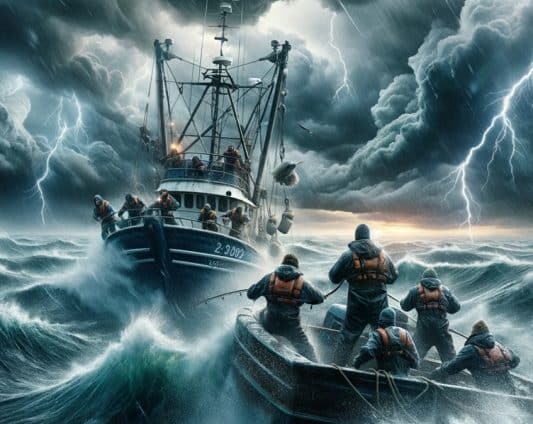Home » Dangerous Jobs • US business news » Navigating Peril: The Most Dangerous Jobs in the World in 2024
Navigating Peril: The Most Dangerous Jobs in the World in 2024
https://www.whatjobs.com/news/usa/us-business-news/navigating-peril-the-most-dangerous-jobs-in-the-world-in-2024

By Hugh Fort in Dangerous Jobs, posted February 20, 2024

Intrigued to know what some of the most dangerous jobs in the world involve? Some might catch you by surprise but believe us when we say they take great skill, courage and resilience.
Health and safety are important in every workplace, however some jobs expose workers to significantly higher risks than others.
Here’s what you need to know about some of the world’s most dangerous jobs in 2024.
Deep-Sea Fishing
Working out a sea, particularly far from the shore, can pose many risks. For this reason, deep-sea fishing is considered a dangerous profession.
Fishermen, while highly trained at dealing with tricky environments, are at the mercy of poor weather stirring up the conditions out at sea. Risks include falling overboard and becoming injured on the boat.
Heavy machinery is handled during deep-sea fishing trips, plus poor weather and slippery surfaces can make the job significantly more dangerous.
Beyond the unpredictability of the open sea, there are also risks associated with being cold and wet for prolonged periods.
Logging Workers
Felling trees can be dangerous due to the sheer weight of tree branches and trunks. Although it involves cutting and dropping trees in a controlled way, it can still cause accidents. Rigorous planning and the creation of evacuation routes are required.
To add to this, heavy machinery is used and there’s a risk of falling from great heights.
The weather can cause complications too by blowing branches around and causing injuries. So can the terrain – particularly if you’re based on a hill, for example.
Often, electrically powered chain saws are used, which in itself is a hazardous item that needs to be used correctly. On the ground, workers need to be cautious of rolling logs.
Even when limbing a tree, workers need to be careful and avoid cutting branches above their shoulders.
Aircraft Pilots and Flight Engineers
Although there are strict safety measures in place, aviation professionals are still faced with inherent dangers that come with flying.
Flying more frequently can increase the likelihood of being exposed to certain dangers ranging from severe turbulence to more extreme risks of engine failure and crash landings.
There is a large amount of pressure for pilots and flight engineers to handle and prepare for these risks.
They’re trained to learn how to make decisions in mere seconds and the outcomes of those decisions are sometimes out of their hands.
The most important thing is to maintain a safe aircraft and keep passengers safe.
Construction Workers
The construction industry is hugely varied. Construction sites themselves can be filled with hazards, ranging from heavy machinery to exposure to unsafe materials.
Not to mention the risks of falling from a height.
As a result, it isn’t uncommon for people to seek personal injury claims after being involved in an accident that wasn’t their fault.
Sometimes, sites may not have been secured properly.
To help reduce the risks workers are exposed to, strict safety protocols need to be followed and there needs to be an ongoing culture of checking for and mitigating hazards to keep themselves and colleagues safe.
The fast-paced nature of this environment also needs a level of vigilance.
Follow us on X, LinkedIn, and Facebook














